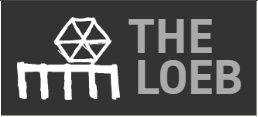Object number1864.1.34
The Roman Campagna
Date1859
Artist
Sanford Robinson Gifford
(American, 1823-1880)
CultureAmerican
MediumOil on canvas
DimensionsUnframed: 5 7/8 x 10 1/4 in. (15 x 26 cm)
Framed: 10 1/4 x 14 1/2 x 2 7/8 in. (26 x 36.8 x 7.3 cm)
Framed: 10 1/4 x 14 1/2 x 2 7/8 in. (26 x 36.8 x 7.3 cm)
Credit LineGift of Matthew Vassar
On View
On viewPeriod19th c
Classification(s)
SignedSigned lower left: S R Gifford
InscribedBy artist, dated lower left: 59
ProvenanceCollections: Elias MagoonExhibition HistoryThe Hudson River School, Vassar College Art Gallery, Vassar College, Poughkeepsie, NY, November 19 - December 16, 1962;
Stanford R. Gifford, The University Art Museum, The University of Texas at Austin, Austin, Texas, November 1 - December 20, 1970;
American Light: The Luminist Movement, 1850-1875; Paintings, Drawings, and Photography, National Gallery of Art, Washington, D.C., February 10 - June 15, 1980;
All Seasons and Every Light, Vassar College Art Gallery, Vassar College, Poughkeepsie, NY, October 14 - December 16, 1983; DeCordova and Dana Museum and Park, Lincoln, MA, February 5 - March 25, 1984; Norton Museum of Art, West Palm Beach, FL, March 25 - July 1, 1984; Mary and Leigh Block Gallery, Northwestern University, Evanston, IL, November 16, 1984 - January 13, 1985;
America and the Grand Tour: Sanford Robinson Gifford at Home and Abroad, Frances Lehman Loeb Art Center, Poughkeepsie, NY, April 17 - June 9, 1991;
The Painted Sketch: American Impressions from Nature, 1830-1880, Dallas Museum of Art, Dallas, Texas, June 21- September 20, 1998;
The Humanizing Landscapes: Geography, Culture and the Magoon Collection, Frances Lehman Loeb Art Center, Vassar College, Poughkeepsie, NY, October 5 - December 20, 2000;
Classic Ground: Mid-Nineteenth Century American Paintings and the Italian Encounter, Georgia Museum of Art, Athens, GA, October 23, 2004 - February 2, 2005;
A Focused Collection: The Hudson River School, Herbert F. Johnson Museum of Art, Cornell University, Ithaca, New York, April 21 - July 29, 2007; Frances Lehman Loeb Art Center, Vassar College, Poughkeepsie, NY, August 17 - October 19, 2007;
America's Rome: Artists in the Eternal City, 1800-1900, Fenimore Museum of Art, Cooperstown, NY, May 23 - December 31, 2009
Label TextSanford Gifford was born and raised in upstate Hudson, New York. He briefly attended Brown University in Providence and moved to New York City in 1845. He studied and exhibited at the National Academy of Design. In spite of keeping his studio in New York, he managed to take extended annual sketching and painting trips to the scenic areas of the Hudson River Valley, the Catskill and Adirondack mountains, as well as to more distant locations such as the Maine and New Hampshire mountains. Yet, for all their dedication to capturing the ‘sublime’ attributes of the American landscape, Gifford and almost all the key artists of the Hudson River School traveled to Europe at least once and participated in the Grand Tour. Many American as well as British and German artists gathered in loose colonies in Italy, particularly Florence and Rome. Sanford Gifford made two trips to Europe, the first from 1855–1857 and the second in 1868/69. From September 1856 to May 1857, Gifford was in Rome. This painting of the ruined aqueduct near the Appian Way outside of Rome was purchased by Elias Magoon, together with three other European oil sketches, in 1859, two years after Gifford’s return to America. It is likely that this and the others were small replicas of larger paintings the artist made based on sketches done at the site. A larger, more finished version of this painting was exhibited at the National Academy of Design in New York in 1858.
DescriptionDepiction of a ruined Roman aqueduct amidst a large open landscape with a shepherd and his sheep standing minute against the backdrop. The stones of the aqueduct glow pink in the sunlight and a mountain in the background is a hazy blue-gray. The sky above is a pale blue to yellow transition.
Object information is a work in progress and may be updated as new research findings emerge.
To help improve this record, please email
loebcollections@vassar.edu
The Master of the Johnson Assumption of the Magdalen
Early 1500s
The Master of the Johnson Assumption of the Magdalen
Nd
Sanford Robinson Gifford
1847-1848
Sanford Robinson Gifford
1873-1879












